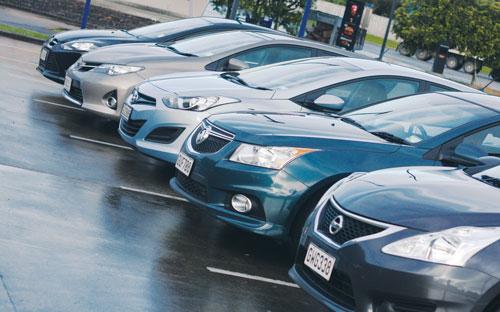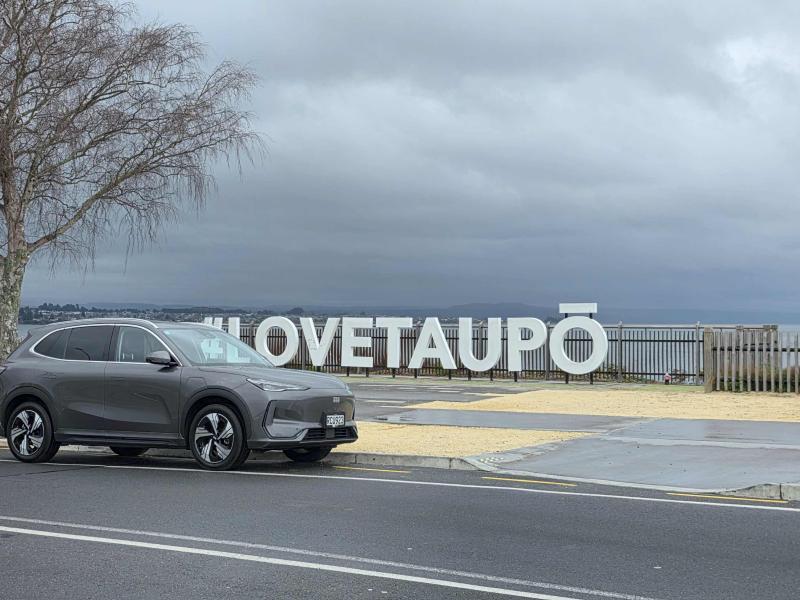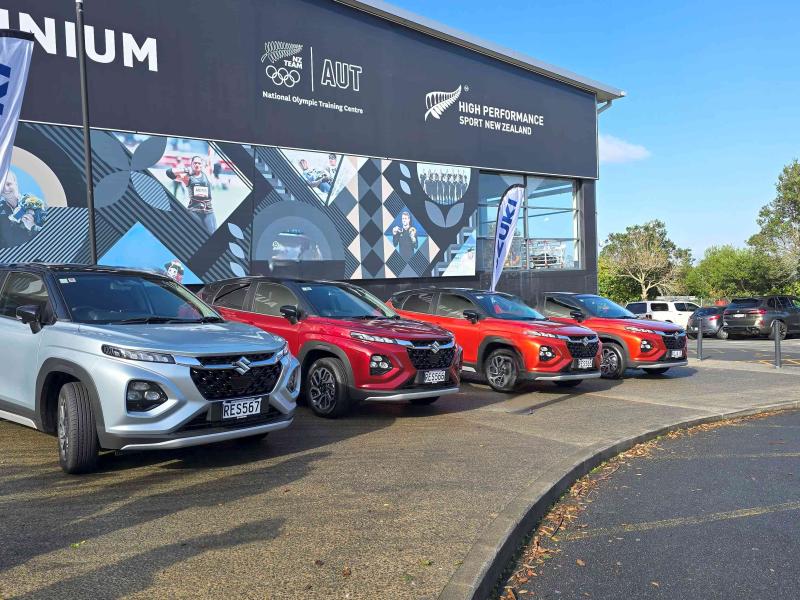Group tests are always a great deal of fun. Take five fleet-orientated hatches, mix with four fleet industry experts, one motoring journalist, one photographer, and a wet winter’s day, and the results as bound to be interesting. Robert Barry compiled the results and Damien O’Carroll took the pictures.
More and more fleets are moving their sales or territory personnel into C-segment hatches – often known as the “Corolla class” - so we decided to test a cross section of brands from the market and see how they stacked up against each other in this context.
The jury for this test included Nigel Bell-Booth from Orix, Nick Auld from GE Custom Fleet, Andrew Shearer from Lumley Insurance, Geoff Tipene from SG Fleet, and me. The test route was a mixture of motorway and city roads around the North Harbour area, and all the vehicles were driven back-to-back to make a fair comparison.
Once again the judges were asked to rank the vehicles out of 10 categories, each vehicle being scored out of a possible total of 100 points, therefore allowing an overall ranking out of 500 points, as the vehicle was scored by five different judges.
The categories were:
• Overall fitness for purpose
• Exterior styling and design
• Interior design and comfort
• Fit, finish and quality
• Ride and refinement
• Powertrain performance
• Road holding and handling
• Safety rating
• Fuel economy
• Value for money
Fifth place: Nissan Pulsar ST
While the Pulsar ST was the lowest ranking vehicle of the group, with a score of 360 points out of 500, it attracted many favourable comments from the group about its suitability as a fleet car, with one driver making the comment: “Good to drive, perfect for a metro rep, but not a rural one.”
Overall, the testers felt that while undoubtedly the Pulsar ST was the lowest priced car of the group at just under $30,000, it was still good value for the specification offered, but the car’s biggest drawback for many was its CVT automatic transmission, which was very noisy when acceleration was called for.
On the positive side of the ledger, the testers commented that the Pulsar had comfortable seats, clear and simple controls on the dashboard, and good all-round ergonomics, but it didn’t offer cruise control, the mirror switch was placed on the dashboard rather than the door, and the overall design for a new car seemed dated in comparison to the others.
Ride quality was marked as being good, but noise from the 16 inch Ecopia tyres was an issue for some testers. Despite some body roll when pressing on, the Pulsar offers good handling, turn-in and steering feel, but the engine and transmission combination let it down.
The Pulsar has the least powerful engine of the group, and this was betrayed by its need to be worked hard to keep up with flowing traffic. It cruised very quietly once at the speed limit, but was very noisy when pushed for performance. The CVT transmission offers a sport button which seems to make more noise without providing any better performance, and at times it was indecisive on a light throttle as well.
However, the Pulsar was scored well for having good progressive brakes, as well as a full size spare wheel and a good tool kit layout.
The audio system garnered comments such as: “Basic, no frills, and functional, with a quality sound that is readily acceptable.”
In summary: “The Pulsar is surprisingly capable on-road, it has nice benign styling outside ,and a slightly old-fashioned interior, though the controls are clear and easily used. The CVT will continue to divide opinion, but it’s the lowest cost and lowest-specified car of the group. Fleet buyers will love it.”
Fourth place: Holden Cruze SRi
Definitely the dynamic driver’s choice of the bunch, with the most powerful engine tested, the Holden Cruze SRi scored 379 points out of 500, and was only bested by the Hyundai i30 for third place by two points.
The colourful cabin of the Cruze SRi was described as rather busy, with its mix of blue, silver, and cream and black, but the seats were favourably marked as being firm but comfortable, with controls that fell easily to hand, while the dashboard offered instrumentation that was clear and easily read.
Unfortunately, the sportier suspension package of the Cruze SRi also transmitted more noise, vibration and harshness into the cabin when driven over harsher road surfaces, and this was exacerbated by the tyre noise as well. And according to one tester the Cruze SRi also has very noisy windscreen wipers, and he didn’t like the jack being stored underneath the full size spare wheel.
However, the handling of the Cruze was marked favourably as being stable with little body roll, inspiring confidence during spirited driving, with good turn-in and excellent grip on the road.
The 132kW 1.6-litre turbocharged engine provided very good performance from the bottom end to the mid-range, but ran out of puff at high revs. The automatic transmission was also marked as being smooth, and willingly changed down when required to. The manual override was also easy-to-use.
However, average fuel consumption jumped to 11.1L/100 during our test run.
Despite its soft pedal feel the Cruze SRi pulls up very flat, but one tester commented that there seemed to be a lot more rear brake bias in this vehicle than the others - but overall nobody had anything negative to say about the braking system.
The audio system with iPod adaptor was marked as being good, with clear sound and a nice design overall.
In summary: “The Cruze SRi was a very good all-round car, one not quite up with the Ford Focus in terms of the handling package, but it’s pursuing it closely. A very good drive, smooth but enjoys and rewards a spirited burst!”
Third place: Hyundai i30
A good all-round performance found the Hyundai i30 sitting in the middle ranking of the five test vehicles, with 381 points The consensus seemed to be that the i30 did everything well, but nothing stood out as being really bad or really excellent - it was plainly destined to be in the middle.
Apart from having to reach over to find the volume control on the radio (admittedly there are controls on the steering wheel), the Hyundai scored positive comments for its seating position, attractive trim, and very good ergonomics. One tester commented that it had the best layout and dashboard of the group. The mirror switch being located on the door got a big tick from another.
Ride quality was described as “comfortable”, with some noise from the tyres. The i30 handles corners well, with little body roll and good stability, although there is no steering feel or feedback from the multi-mode Flex Steer elelctric power steering system, but the car turns in well with good grip.
The 1.6-litre engine provides adequate performance, but needs to be worked hard as there is little mid-range performance, but the six-speed automatic does its best to overcome this and provides a very good manual override mode. One driver commented that the Hyundai gearbox seems to like to change up to top gear very quickly, more so than some of the other vehicles.
One tester questioned the efficacy of the Active Eco system in helping to return better fuel efficiency, but commented that anything to remind fleet drivers about driving more economically was possibly a good thing.
The i30 has effective brakes, even though one tester commented that there was a general lack of feel in all driving conditions.
Our testers all said the audio system was a good design, with a layout which makes it easy to use, but the sound quality wasn’t as clear as some of the competitors’.
In summary: “It drives okay, it’s not the best, but, again, not the worst of the group. It’s very benign, the interior is good, and it delivers a comfortable and secure ride. A true road warrior.”
Second place: Ford Focus Sport
Only three points separated the Ford Focus Sport from taking the top ranking, and it scored 398 points out of a possible 500 to take second place. It was the most expensive vehicle on test at $41,990, and the best-equipped, but it was more than $12,000 more than the Pulsar ST, which did question its value-for-money proposition in this comparison.
What wasn’t in question, however, was the high level of quality, refinement, comfort and driving ability, which makes the Focus a true competitor for the Volkswagen Golf and the Opel/Vauxhall Astra, the latter not available locally.
While the Focus was praised for its beautifully-appointed bucket sports seats, and a leather clad steering wheel with full adjustment, the dashboard was criticised for being too busy. Two testers commented that they didn’t like the 747-style setup with so many buttons and a rotary controller.
Two of the taller testers also commented that leg space was a bit tight for them, and the seat was a bit short, although the Ford-supplied rubber foot mats in the cabin gained positive comment from many.
The Focus was the quietest car on chip sealed roads, and one tester commented that it had the best combination of ride comfort and handling of all the cars on test. The engine was marked for its smoothness and good mid-range pickup for overtaking, while the dual clutch gearbox in sport or manual mode was an excellent performer. with clean and crisp gear changes.
All the testers commented that the Focus had excellent brakes, one stating that they were almost too good, inspiring people to leave braking until the very last moment.
The Sony premium sound system in the Focus was also judged to be the best of the group on test
In summary: “Class-leading, and almost faultless on road ability. Should be the market leader instead of the Corolla. Fun vehicle to drive, well-equipped, but should be for the price. Best in this test, “
First place: Toyota Corolla GLX
The Toyota Corolla GLX was the only car to crack 400 points in this group test. It scored 402 out of a possible 500, and literally just squeaked past the Focus Sport.
The Corolla was roundly complimented by all the testers for having a class-leading chassis, matched to an engine and CVT transmission that worked well together, making it a vehicle that would be ideal for both city and rural applications. One tester said: “I like the changes, it is well overdue from Toyota.”
But although the comfort of the Corolla’s seats and ergonomics were highly rated, the flat facing dashboard opposite the passenger seat didn’t impress one tester, and another called it ugly, while the touch screen stereo controls were called fiddly by another.
As in the Focus, the Corolla was also fitted with a reversing camera which alleviates concerns about rear blind spots.
On the road the ride quality of the Corolla was compliant and comfortable, but still very sporty, with excellent steering feel, and the turn-in was sharp and composed.
Our testers all liked the handling, which was described as stable and secure with very little body roll, and one tester went so far as to call it a “great setup” while another said “really liked it as a package”.
The 1.8-litre engine was nicely matched to the CVT transmission. It pulled well, and there was little whine from the CVT even when accelerating firmly. The transmission’s manual mode was also useful, and gave drivers more control when required.
Braking was sound and secure under all conditions, with good pedal feel, and as an additional safety feature the hazard lights were activated when any driver braked very hard, to warn vehicles behind.
The touch screen audio system produced good sound, but one tester commented that he felt it looked almost like an afterthought in the overall execution of the dashboard.
In summary: “It’s right up there on this test. It’s a very secure and confidence-inspiring setup, with great steering feel and cornering from a superb chassis. Great on-road drive, probably the best in the group. It’s a great package, but is let down by that dashboard.”






